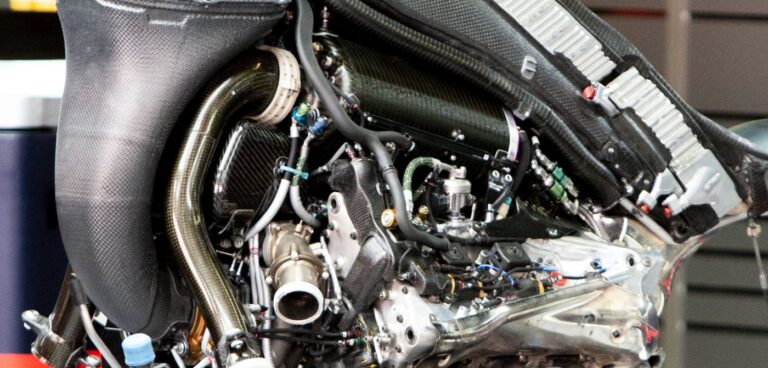The FIA World Motor Sport Council (WMSC) has approved new power unit regulations for Formula 1, to be introduced in 2026. Key changes include the removal of the MGU-H, an increase in output for the MGU-K and much tighter constraints on ICE design. The confirmed rules also reiterate a commitment to 100% sustainable fuel by 2026, which must be sourced either from non-food bio sources, municipal waste or certified carbon capture schemes.
The V6 engines will retain essentially the same layout as now, with a similar RPM limit, however, the fuel flow rate will be reduced with an aim of cutting power to approximately 400kW (536bhp) – a significant drop from the current level of approximately 630kW (850bhp), with total PU output toady sitting at around 750kW (1000bhp) once the 120kW contribution of the MGU-K is accounted for. The technical regulations specify that fuel energy flow rate must not exceed 3000MJ/h, which equates to approximately 65kg/h, compared to the current fuel flow rate of 100kg/h.
The bottom end components of the ICE, covering the reciprocating parts, pumps and other ancillaries, will be subject to much more tightly prescribed designs. Greater freedom will be retained for combustion system design, however, features such as variable inlet trumpets will be banned. The stated aim of this limitation on engineering freedom is, as ever, cost control.
The removal of the MGU-H will effectively necessitate a ground up redesign of the power units by manufacturers, as the current control it affords over the inlet charge will be lost. Furthermore, the rules surrounding permitted materials will be “extended to exclude many high-cost options”. Standardization of components such as injectors and many engine sensors will also be enforced. Parts such as exhaust systems and other ancillary items are to be included in what constitutes the ‘power unit’ so far as running life and thus penalties are concerned.
Countering the reduction in power of the ICE, MGU-K output will be upped to 350kW, with full power available up to around 300km/h. The regulations specify the following equation for deployment: P(kW)=1850 – [5 x car speed (km/h)] when the car speed is below 340km/h; at or above 340km/h, MGU-K power will be limited to 150kW.
The FIA also states that the regulations have been devised with the aim of increasing the road relevance of the ERS components; while battery cell chemistry and technology will be open to development, there is a non-exclusivity provision in the rules.
Testing restrictions
Significantly, power unit testing will be steadily reduced on a sliding scale. Manufacturers will be limited to the following number of test benches:
– Single-Cylinder Dynamometers: 3
– Power Unit Dynamometers: 3
– Power Train Dynamometer: 1
– Full Car Dynamometer: 1
– ERS Test Benches: 2
The number of operational hours that PU Manufacturers can use for their development will also be limited to control costs, according to the following table:

Finally, a cost cap on engine development and production (excluding the supply and servicing of customer power units) will be fixed at US$$95m until the end of 2025, with a rise to US$130m from 2026.


